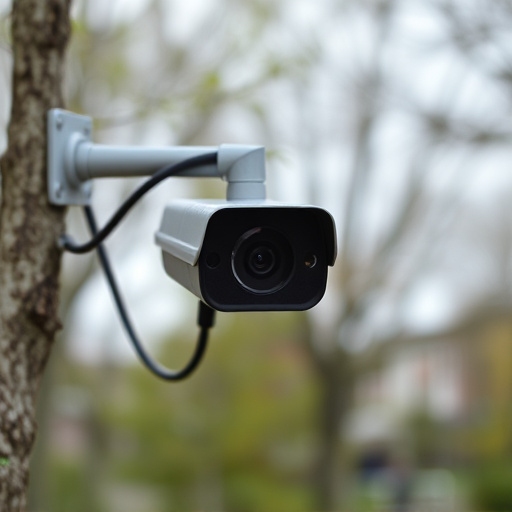Miniature surveillance devices, especially concealed cameras, have gained popularity for babysitter monitoring due to their discreet integration into everyday home objects. These cameras allow parents to remotely observe their children's activities without disturbing routines or compromising privacy. With a wide array of innovative options available, they cater to modern lifestyle changes and safety concerns, offering high-definition video, motion sensors, and night vision capabilities via wireless transmission to parent apps. However, their integration raises ethical and legal issues, with varying rules regarding consent, recording, and data storage by jurisdiction. Responsible usage is crucial as these devices can be used for various applications beyond babysitting, enhancing home security through real-time alerts and high-definition video streaming from discreetly placed cameras like picture frames or plants.
- Understanding the Rise of Miniature Surveillance Devices
- Common Objects Turned Into Covert Cameras
- Ethical Considerations and Legal Implications
- Benefits and Use Cases for Concealed Camera Monitoring
Understanding the Rise of Miniature Surveillance Devices
In recent years, there’s been a notable surge in the popularity of miniature surveillance devices, driven largely by the increasing demand for concealed cameras for babysitter monitoring. These tiny, discreet cameras fit seamlessly into everyday home objects like toys, books, or even houseplants, allowing parents to remotely observe their children’s activities without compromising privacy or disturbing routines. The market has responded with a wide array of innovative options, catering to diverse needs and preferences.
The need for such devices stems from modern lifestyle changes, where both parents often work full-time, leading to increased reliance on babysitters. With safety concerns rising, many parents are turning to these advanced surveillance solutions to ensure peace of mind while they’re away. Miniature cameras offer a level of discretion that traditional security systems lack, making them popular choices for those seeking effective yet unintrusive monitoring options.
Common Objects Turned Into Covert Cameras
In today’s digital era, innovation has turned everyday objects into concealed cameras, offering solutions for various needs, including babysitter monitoring. From smart toys to seemingly innocuous home decor items, manufacturers have integrated tiny surveillance devices that capture high-definition video and transmit it wirelessly. These hidden cameras provide peace of mind by allowing parents or employers to remotely monitor activities within their homes or offices.
Common objects like picture frames, indoor plants, and even smoke detectors have been transformed into covert cameras, seamlessly blending into the environment. With motion sensors and night vision capabilities, these devices capture footage without drawing attention. For instance, a babysitter monitoring app can utilize a smart mirror or a digital photo frame to stream live video, ensuring children’s safety while parents are away. This subtle approach to surveillance offers convenience and discreteness, catering to those seeking advanced yet unassuming security solutions.
Ethical Considerations and Legal Implications
The integration of miniature surveillance devices into everyday home objects raises significant ethical considerations and legal implications, especially when used for concealed cameras for babysitter monitoring. Privacy is a fundamental human right, and placing hidden cameras in spaces traditionally considered private—like homes or even toys meant for children—can infringe upon this right. Even with the intent to ensure childcare quality, parents must balance their need for reassurance against potential privacy violations that could impact both the babysitter’s and child’s trust.
Legally, the use of concealed cameras is subject to varying regulations depending on jurisdiction. Some areas have strict rules regarding consent, recording, and storage of such surveillance footage. Using these devices without informed consent or in a manner that breaches data protection laws can lead to severe consequences, including civil lawsuits and criminal charges. As technology advances, it’s crucial for both manufacturers and users to stay informed about legal boundaries to ensure responsible and ethical deployment of miniature surveillance devices within homes.
Benefits and Use Cases for Concealed Camera Monitoring
Miniature surveillance devices, or concealed cameras, offer a range of benefits and use cases that can greatly enhance home security and peace of mind. One prominent application is babysitter monitoring. These tiny cameras can be discreetly placed in common areas or specific rooms to allow parents to remotely observe their children’s activities while they’re at home with a caregiver. This provides an extra layer of safety and assurance, ensuring that young ones are in good hands and that the babysitter is adhering to agreed-upon rules.
In addition to babysitter monitoring, concealed cameras can be utilized for elderly care, pet surveillance, or even as a means to deter and detect intrusions. Their small size and ability to blend into the environment make them ideal for installation in everyday home objects like picture frames, potted plants, or decorative books. With real-time alerts and high-definition video streaming, homeowners can keep an eye on their spaces from anywhere, promoting a safer and more secure living environment.
As we’ve explored, miniature surveillance devices have evolved beyond mere hobbyist gadgets, integrating into everyday home objects. From covert cameras hidden in common items like lightbulbs and door handles to innovative solutions tailored for babysitter monitoring, these concealed cameras offer enhanced security and peace of mind. However, it’s crucial to balance these benefits against ethical considerations and legal implications, ensuring responsible use and respecting privacy rights. With proper guidelines and oversight, concealed cameras can serve as powerful tools in various scenarios, promoting safety without sacrificing transparency.
